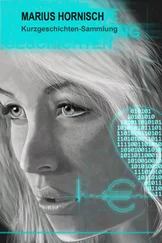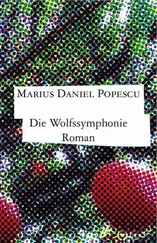The next dispute is over whether ideology represents a temporary or a permanent fixture in society. This concerns whether ideology is uniquely a feature of certain forms, phases, or time-periods of human society’s developmental trajectory, with an identifiable beginning and end, or a constant presence wherever human society exists, with at most marginal qualitative changes in its essential character. The former position identifies modernity as the ‘starting point’ of ideology, characterised by increasingly dense, urbanised populations, the shift to mass production in agriculture and manufacturing, innovations in communication and transport, and an increase in the purview and complexity of state and legal functions. Ideology, on this account, is the fortuitous product of intersections between industrial capitalism and class conflict among bourgeois business owners and proletarian wage-workers, constitutional parliamentary democracy and electoral competition among parties, and contingent Western European geoeconomic–geopolitical–geocultural primacy. It likewise has an identifiable ‘end point’ through the transition to a new societal form or phase (e.g., ‘final communism’, globalised liberal democracy). The latter view, meanwhile, denies that ideology can have a definite beginning and, instead, points to clear milestones of qualitative ideological transformation from its long premodern history, tied to theological disputes, feudal rivalries, or personalist courtly factionalism. It observes that ideology is not only present but has often pursued parallel, entirely unrelated trajectories in different societies that are (at least partly) independent of capitalist, democratic, or Eurocentric developments. Accordingly, it is sceptical that there can ever be an ‘end of ideology’ and, instead, conceives of large-scale societal transition as a change in the dynamics of ideological ‘dominance’ or ‘hegemony’, expecting ever new social divisions around which future ideologies can take shape.
Another dimension of debate is over whether ideology is best conceived as a singular or a plural phenomenon: as ideolog y or ideolog ies . The key question here is whether it should be grasped as a totality alongside other powerful social forces, without becoming distracted by petty internal differences that do not alter its overall effects, or whether treating it monolithically prevents detailed analysis of how complex interpersonal and intergroup social dynamics play out through inter-ideological encounters. One side insists that ideology must be understood, first and foremost, as a discrete social domain with dedicated functions, ranked alongside (and sometimes subordinated to) the economic and political domains and sometimes elided with ‘discourse’ or ‘culture’. On this conception, ideas and how they are ‘recounted’ or ‘told’ are epiphenomenal to ideology’s social functions, and differences between ideologies are inconsequential compared to the gulf between them and society’s economic and political ‘drivers’. Insofar as ideology is significantly internally differentiated, it can be modelled as a single spectrum along which people’s positions can be ranked (e.g., liberal–conservative, left–right, radical–reactionary), often using scalar numerical quantifications. The other side argues for a more refined breakdown of ideology that incorporates its extensive range of different social manifestations: its legal, religious, media, and educational aspects as well as its economic and political forms. Likewise, it holds that the precise hierarchy, ordering, juxtaposition, and deployment of ideas is vital to charting simultaneous and intertemporal differences within and between ideologies and their effects on the shape of society. On this granular account, ideology is a collection of many different partly overlapping bodies of ideas – older or newer, larger or smaller, more or less complex and stable – which can be meaningfully sketched out only in multidimensional space.
A further question concerns whether ideology is primarily an individual or a collective phenomenon. This debate is about whether the locus at which ideology’s social effects should be evaluated is human beings’ personal mental and bodily status and behaviours, or whether it is more promising to treat ideology as the expression of various societal group dynamics. One view frames ideology in terms of identity, as a mechanism to impose social salience on our personal biological and demographic features, and to create, recognise, and/or push back against our positions in hierarchies of privilege and discrimination. It sees ideology as a social force operating on our personal psyches – mobilising our unconscious and subconscious, crafting correlations with our personality-traits, fostering certain emotions and forms of reasoning, and influencing our evaluative and epistemological judgments. Moreover, it shapes our social behaviours, from voting and consumption preferences to labour decisions and choices over ‘personal growth’ and self-development (e.g., sport, fitness, leisure pursuits). The alternative view examines ideology as an articulation of social group solidarity based on posited commonalities of contextual situation and experience, motive drives and interests, and social aims and plans. For it, ideology chiefly affects and manifests in the mass psyche, steering the substantive content, direction, and intensity of social attitudes (i.e., public opinion) and collective sentiments (e.g., ‘moral panics’, ‘group feelings’, ‘national moods’) and affecting our conduct in public debate. It defines parameters of toxicity versus acceptability and taboo versus encouraged behaviour in (interpersonal) social interactions, especially where these bridge identity or group divides, and either perpetuates or counteracts power relationships between their participants.
Lastly, ideology analysis divides over whether ideology is principally an explicit or implicit social phenomenon. Here, the substantial issue is whether ideology takes the form of overt and conscious articulations of its constitutive ideas, which are openly and unambiguously ideological in nature, or whether it is (also/instead) to be found in forms that are not consciously ideological – or even specifically claim to be non-ideological – that nonetheless ‘deliver’ ideological content in a subtle, unwitting, even disguised way. The former approach treats ideology as primarily linguistic and textual, found above all in print, digital, online, and broadcast media, where ideas are directly rendered and where their content and delivery can be subjected to lexical, logical, subtextual–contextual–intertextual, or rhetorical analysis. On this account, ideology appears mainly as self-aware programmatic statements and (discursive) behaviour expressly designed to deliver, frame, and thematise specific ideas in a particular ‘telling’ (e.g., manifestos, statements of principle, op-eds, demonstrations, scholarly interventions). By inference, ideological analysis is empirical, measuring ideology’s social effects through observable, (usually) quantifiable data and involving historical and comparative assessments of social phenomena and events according to their frequency of incidence, scale, and popularity. By contrast, the latter approach highlights how ideology can also be symbolic and ‘applied’, non-linguistically embedded or summarised, with sensory (especially audiovisual) cues acting as a ‘shorthand’ for ideas and for the social behaviours and institutions that ‘instantiate’ them. This approach focuses on ‘what is left unsaid’, ‘everyday’ behaviour that reveals unstated, underlying ideological commitments, often presented as ‘natural’, ‘apolitical’, ‘neutral’, or ‘common sense’. Its ideological analysis is correlatively more interpretative, evaluating ideology’s effects using theoretical models that depict various ‘deep-structure’ social forces and generalised trends that are not always immediately discernible from surface-level empirics but require reasoned extrapolation.
Читать дальше












